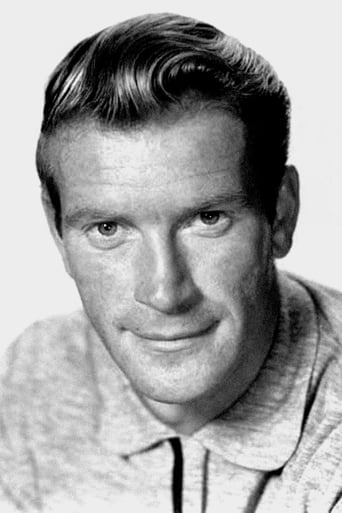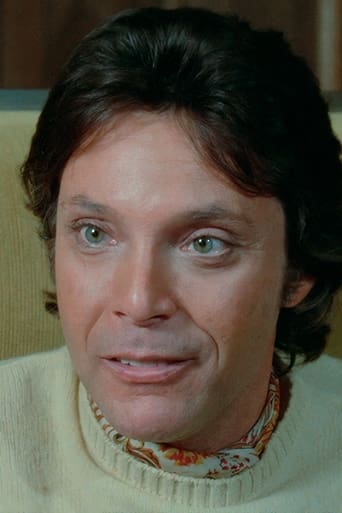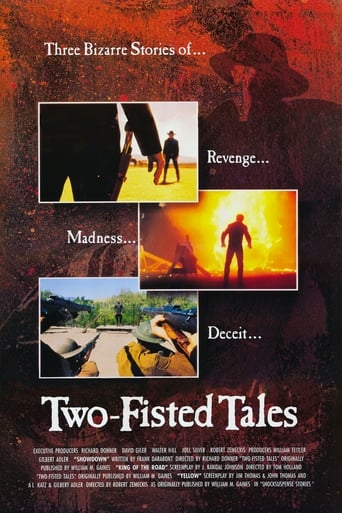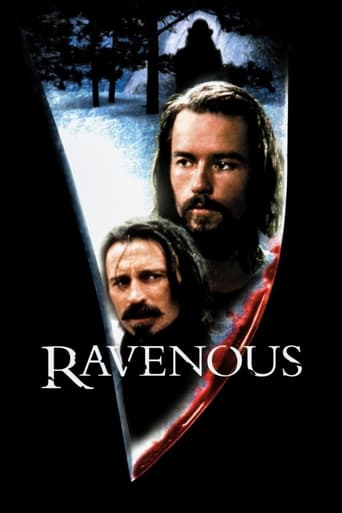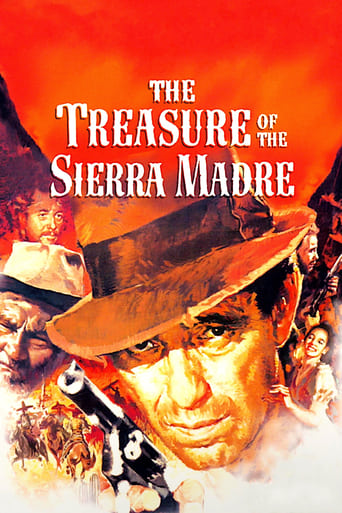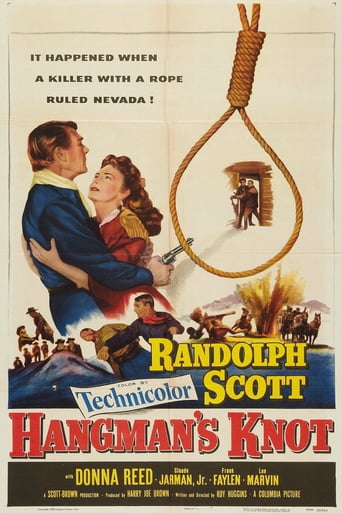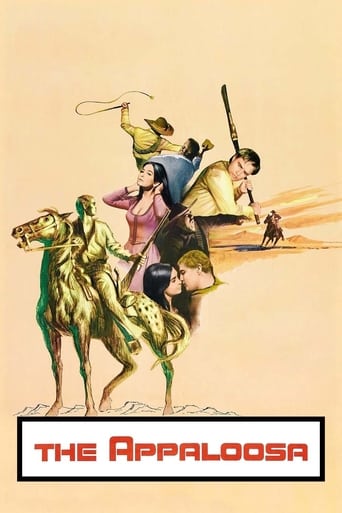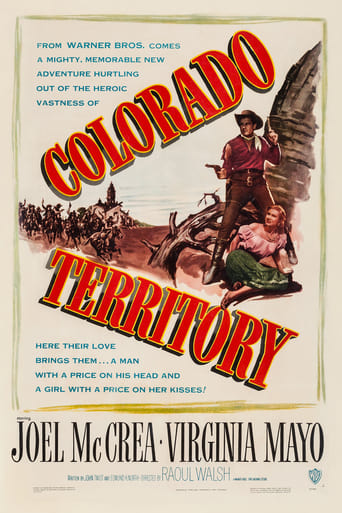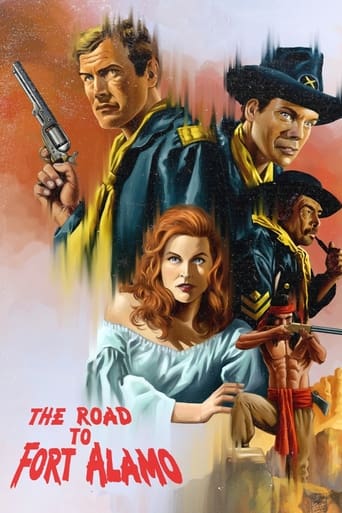
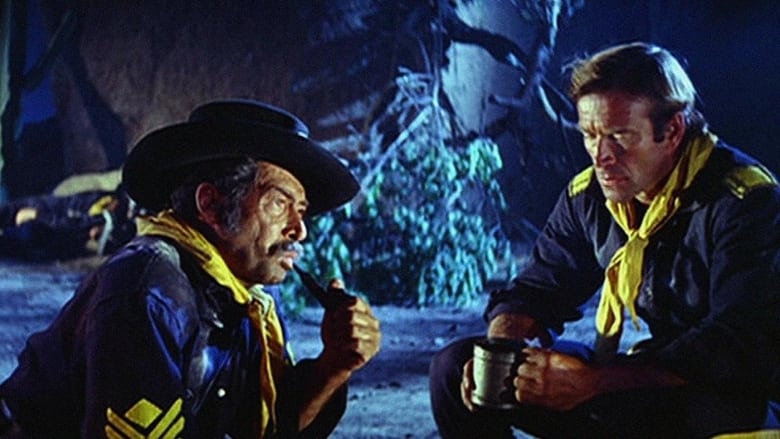
The Road to Fort Alamo (1964)
A lone rider comes across a dying soldier, the victim of an Indian attack, who gives him a paper authorizing the payment of $150,000 to the U.S. Army. The rider gathers some colleagues who disguise themselves as soldiers and who take the paper to a bank. They get the money but a shoot-out occurs, an old woman is killed, and the gang acrimoniously splits up. Later some members of the gang meet up with some real U.S. Cavalry soldiers and together they must fight off new Indian attacks.
Watch Trailer
Cast
Similar titles
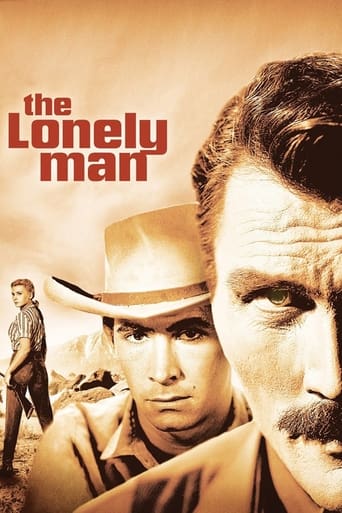
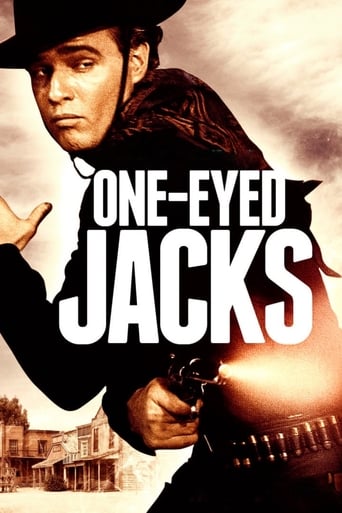
Reviews
Wonderful character development!
Admirable film.
A Major Disappointment
This is one of the best movies I’ve seen in a very long time. You have to go and see this on the big screen.
This is my second time watching the first of Bava's infrequent (and most atypical) ventures into Western territory. Coming at the start of the genre's idiosyncratic "Euro" (and, in the long run, highly influential) overhaul, it obviously feels the least like your typical "Spaghetti" Western – even if, truth be told, MINNESOTA CLAY from the same year (on which Bava is reputed to have worked but which is credited to one of the formula's undisputed masters i.e. Sergio Corbucci) is more successful in this regard! Anyway, the movie under review is considered among Bava's minor efforts – and rightly so; yet, it is nowhere near as bad as some make it out to be and, to my mind, preferable to his comedy-oriented last entry in the field, namely ROY COLT AND WINCHESTER JACK (1970; with which, as it happens, I will be re-acquainting myself presently). As I said, the film mainly looks to the American model – albeit following its more routine examples – for inspiration, but that is not necessarily a bad thing. Interestingly, Bava starts off proceedings with an inconsequential 'prologue' (featuring favourite "Euro-Cult" villain Gerard Herter) involving a crooked card game and an amusingly sleepy bartender. Rugged (and immensely hirsute) hero Ken Clark – who would return for the recently rewatched SAVAGE GRINGO (1966), which Bava helmed albeit without credit – is a Southern landowner who lost everything to a Northern onslaught during the Civil War, and whom he now plans to get back at by posing as a Union officer and 'withdraw' a cache of money from the bank destined to the enemy forces! Unluckily for him, the associates he picks up for the job – led by another familiar face, Michel Lemoine – prove greedy and leave him and his closest ally for dead or, more precisely, at the mercy of the marauding Osage Indians! Eventually, the two men are saved by a Southern Army wagon train bound for the titular outpost so that they are forced to keep up the military disguise; ironically, they are soon joined by Lemoine himself, the sole survivor of the renegade gang who also had a brush with the redskins but is still in possession of half the stolen sum. Clark, whose uniform bears the higher rank, now delights in rubbing his treacherous ex-partner the wrong way – but, in fact, neither has given up on the loot and each intends making off separately with it at some point. However, the Osage come down en masse on the small unit (which includes a by-the-book Colonel, a wily Second-in-Command soon in on Clark's ruse but willing to keep it to himself, the priggish wife of the Colonel at the fort and even a female prisoner – earthy redhead Jany Clair naturally comes to fall for the brawny charms of, and senses a misfit kinship with, our protagonist – being escorted there for trial) and they have to stay on and fight it out! A nice touch has the Indians make flower arrangements via the 'confiscated' paper money (which to them is useless) and send them floating down river in order to lure avaricious soldiers out into the open and slay them; this idea then comes into play again at the inevitable showdown between Clark and Lemoine.While Bava was clearly ill-at-ease within this particular genre (unflatteringly billed in this instance as John Old), here at least he incorporates his recognizable colour palette to effective use; Carlo Savina's score, then, includes the token ballad warbled over the opening credits and, surprisingly, cues which bear an uncanny resemblance to those composed for the soundtrack of the 1957 Mexi-Horror classic THE VAMPIRE!
"La strada per Fort Alamo" was shot in Italy, not in Spain like most Italian westerns. Director "John Old" alias Mario Bava was obviously influenced by the John Ford classics such as "She Wore A Yellow Ribbon", all just in a much cheaper B-movie style; it has almost nothing in common with the typical "Django pays for your funeral" kind of western. This movie has a good script with good dialogs; it's about a bandit who has to pose as an army officer after he got caught wearing a stolen uniform. When Indians attack, he gets opportunity to show he is a brave good guy. One word to the disappointed Bava fans: surely the master had to earn a living, too, and this is what he did for it. You don't shoot masterpieces like "Danger: Diabolik" or "Mask of Satan" every week. More important than such comparisons is that "La strada per Fort Alamo" is a good quality western in a traditional way, and if you don't expect more than that, it's well worth watching.
I've only seen each of the 3 Bava spaghetti westerns once (neither among his best work or his preferred genre), but I disagree with many people who considered Nebraska Jim to be a better film. Strictly from an entertainment sense, Arizone Bill (La Strada per Fort Alamo) held my interest noticeably better (though admittedly the copy of Nebraska Jim that I saw had severely distraction issues with audio). While Nebraska Jim seemed like a mostly cookie cutter extended western TV show episode you'd expect to see on American TV, Arizona Bill was more like a 2nd rate Good Bad and Ugly wannabe with its stolen civil war funds plot line and a group of criminals that ranges from a couple of more 'decent' people who are criminals to outright despicable violent ones. It was just slightly different enough to make it more interesting to me and it felt more like a Bava film. Maybe if I rewatch these films a few more times I'll notice things I've overlooked which will explain others' preferences, but I'm a bit skeptical that that will happen.It's not the greatest or most original film, but it kept me entertained and my biggest complaint is with regards to the 'romantic' subplot and its cheesy accompanying music (at least on the copy I saw, I'm not sure if it was or wasn't the original music used). Bava isn't always at his best when trying to provide romance/love interests to his films. Black Sunday (La Maschera del demonio) is IMHO the quintessential Italian Gothic horror film and a favorite of mine, but even his admirers have to admit that in that great film, the 'undying love' of the young Dr. Gorobec for Katia -- whom he has just met one day previous -- is a bit silly and one-dimensional and at times almost laughably overly melodramatic. I took off one point for the botched romance portions of Arizona Bill, though I did like it overall more than Nebraska which ended up with the same 5/10 score from me.The copy of the film I saw was an English language widescreen version from an old somewhat glitchy videotape source with a runtime closer to the USA or German cuts. I'm not sure what was excised from the original 90 minute cut listed on IMDb and maybe when TL's big Bava book comes out it will tell us what is or isn't missing from the cut I saw, but I hope one of the cult DVD companies (like Image, Anchor Bay or Blue Underground) pick up both this title and "Nebraska Jim" sometime in the near future to provide Bava's fans with a good legitimate uncut DVD release with the best transfer possible considering whatever film elements exist. I'm sure the underrated director's fans would welcome quality releases of all his films, even the lesser known and hard to find ones where Mario took over directorial duties from a previous director leaving a project.
Director Mario Bava usually has a visual flair which helps elevate his movies above their "Grade B" genres. He doesn't seem to have his heart in this project, however. It plays out in a routine fashion and about the only scene which might linger in the memory has the Indians putting dollar bills adrift in a river in order to lure cavalry soldiers out into the open. Ken Curtis, who always deserved better, makes an attractive hero but the script gives him little to work with.
